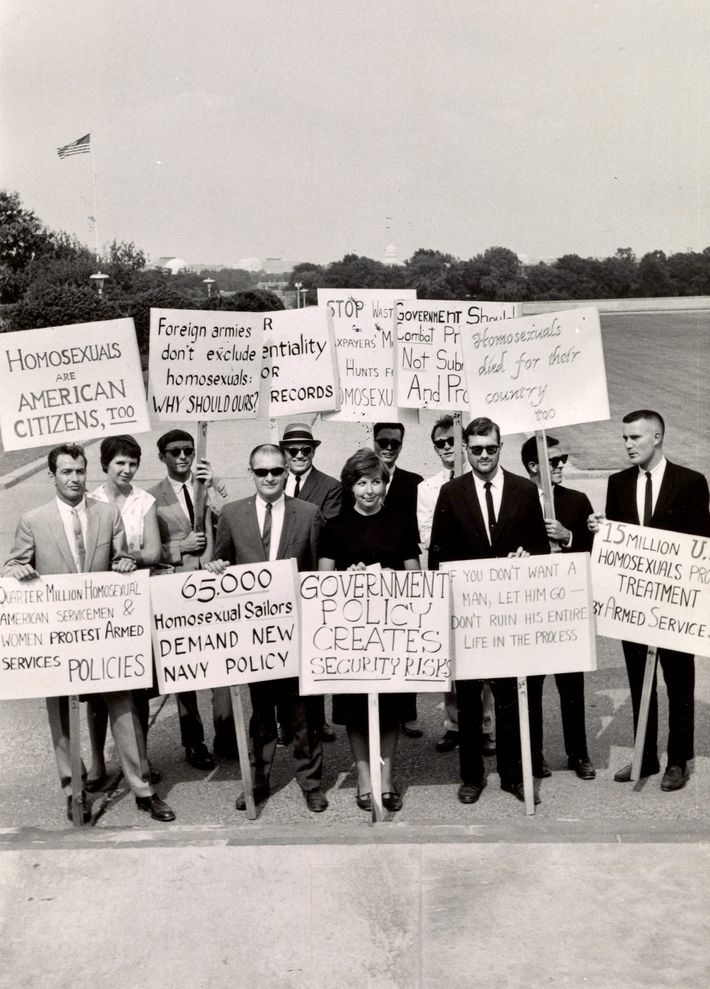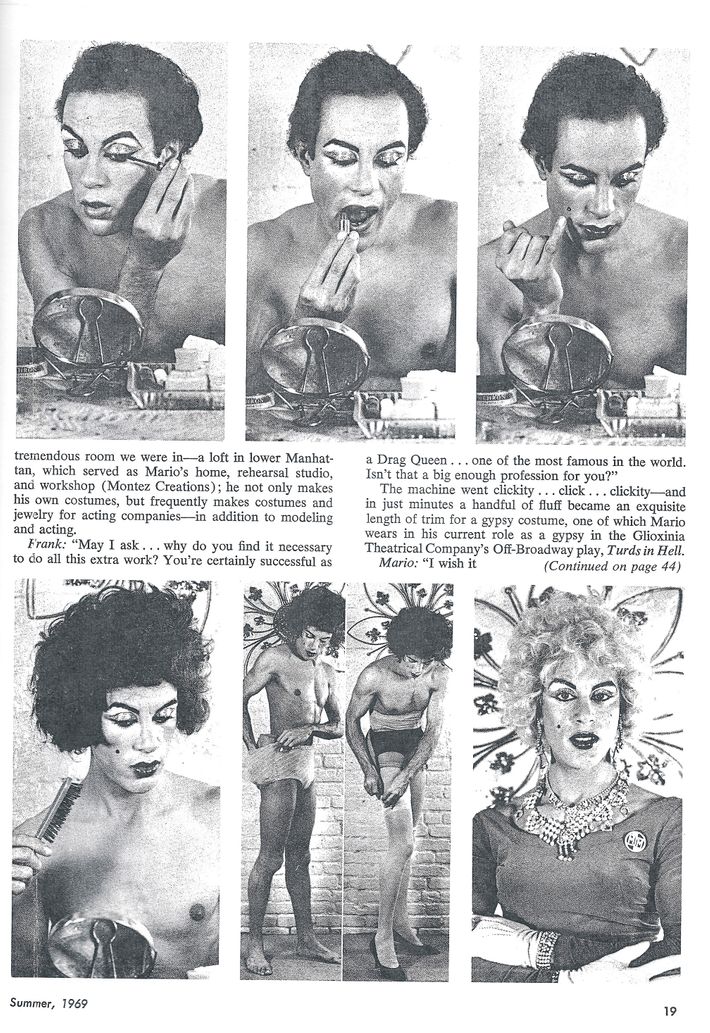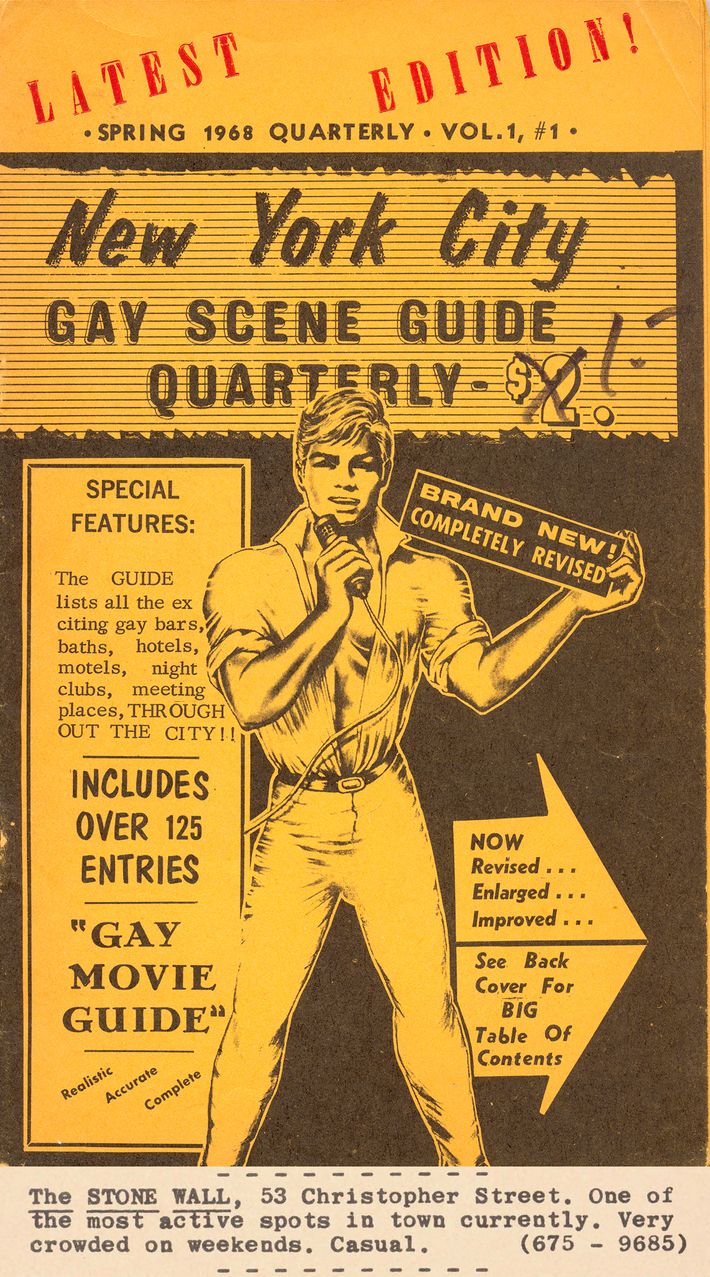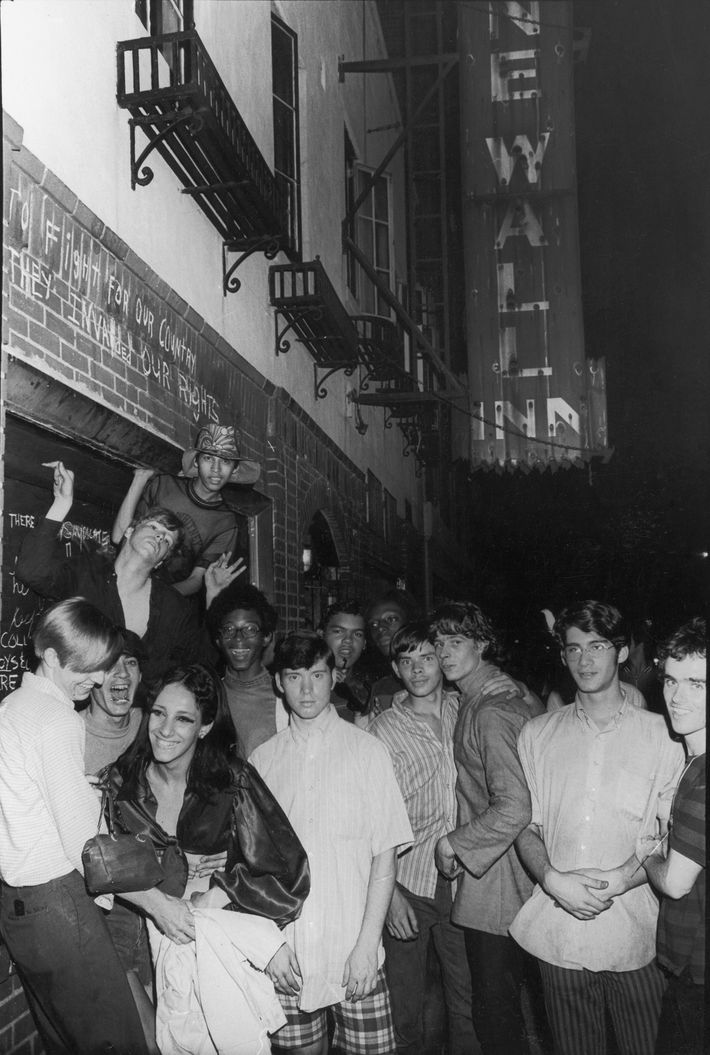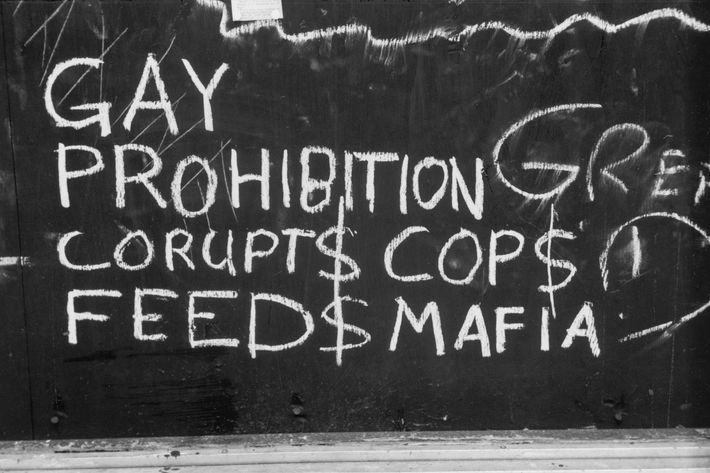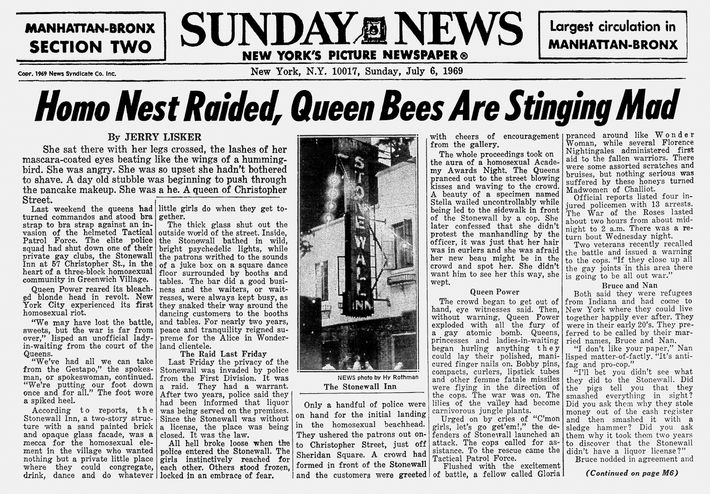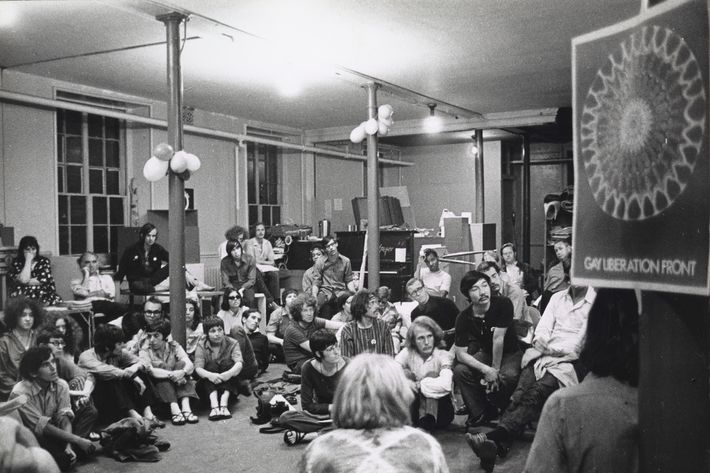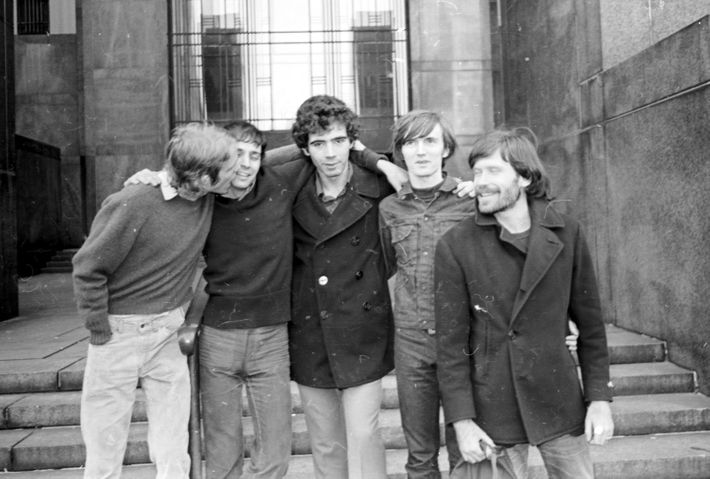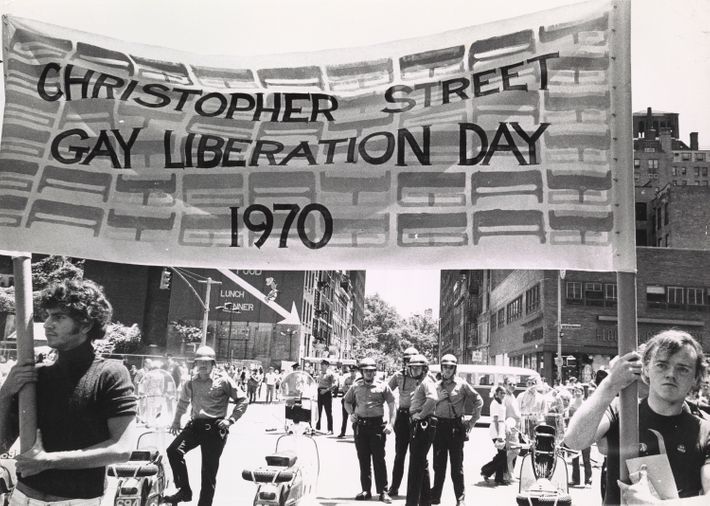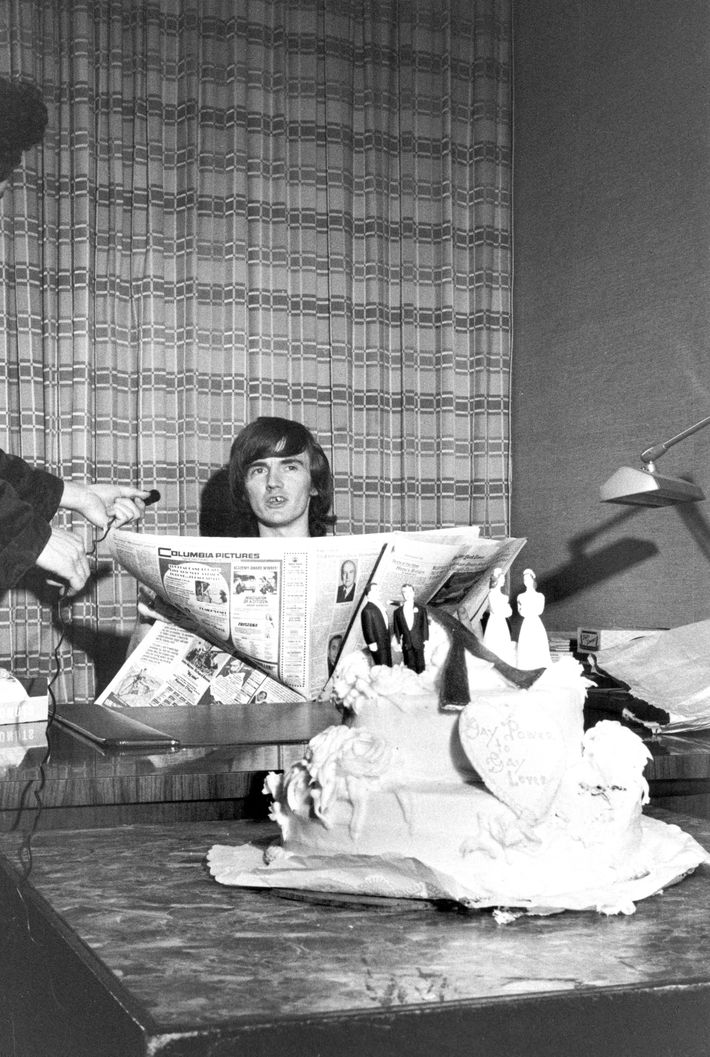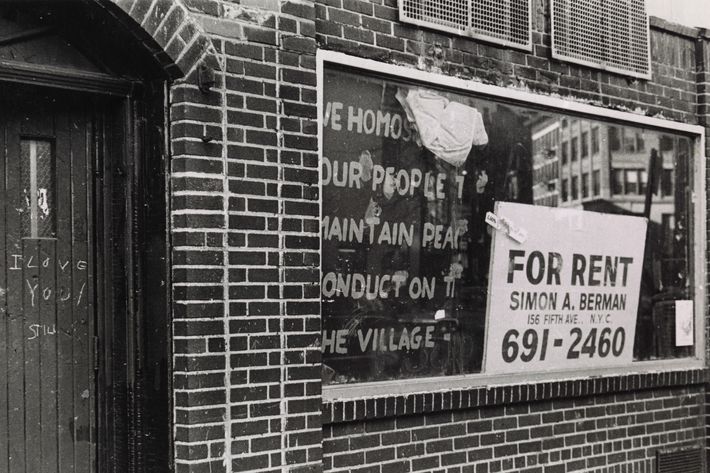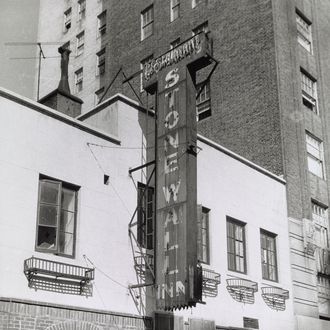
The sites of great battles often don’t look like much. Visit Gettysburg or Flanders, and the fields themselves are mostly grass and trees, with a few historical markers and the odd reenactment here and there. And so it is with the Stonewall Inn, the Christopher Street gay bar where, during a raid 45 years ago this week, a few dozen men decided that they were fed up. Stop by Sheridan Square today, and although there are a couple of places to pause and reflect — the ghostly George Segal bronzes across the street, rainbow flags here and there, a plaque — there isn’t much to make anyone linger. Even the Stonewall Inn itself went out of business soon after the riots, its storefront becoming a bagel shop for a while, and eventually a heavily renovated tourist version of its earlier self. You can once again order a drink in a bar called the Stonewall Inn at 53 Christopher Street, but there isn’t much physical history there behind the parti-color flags. You have to imagine that overheated night for yourself.
This bothered the longtime West Villager Susanna Aaron. A TV news producer and documentarian, she was struck, she says, by “the lack of sense of place” on Christopher Street, particularly as the social center of gay New York moved up to Chelsea and beyond. This month, as thousands descend on Sheridan Square for Pride Week, she’s arranged for the store windows up and down Christopher Street to exhibit posters devoted to the history of the gay-rights struggle, with an eye toward creating a permanent LGBT history walk. (You can see eleven of the images, with text adapted from the 26 panels, below.) “You know,” she says, “45 isn’t such a big milestone — but the difference from the 40th anniversary is that it’s everywhere! Obama is all-in on marriage equality; Barneys’ spring campaign was about transgender people. The gay-rights movement has made the leap into being part of our common national history.”
This is a short-lived exhibition, one that will come down at the end of the week. It’s not enough, of course. A permanent history trail is merely a loose idea at this point, although, Aaron points out, the Department of the Interior is looking into marking and preserving significant sites relating to the gay-rights movement, much as it has for the civil-rights struggle. Until that happens, your imagined view of that night will have to suffice — and do not underestimate the power of even the unadorned place. After all, “the world will little note nor long remember what we say here,” Abraham Lincoln said when consecrating that other battlefield, “but it can never forget what they did here.”
